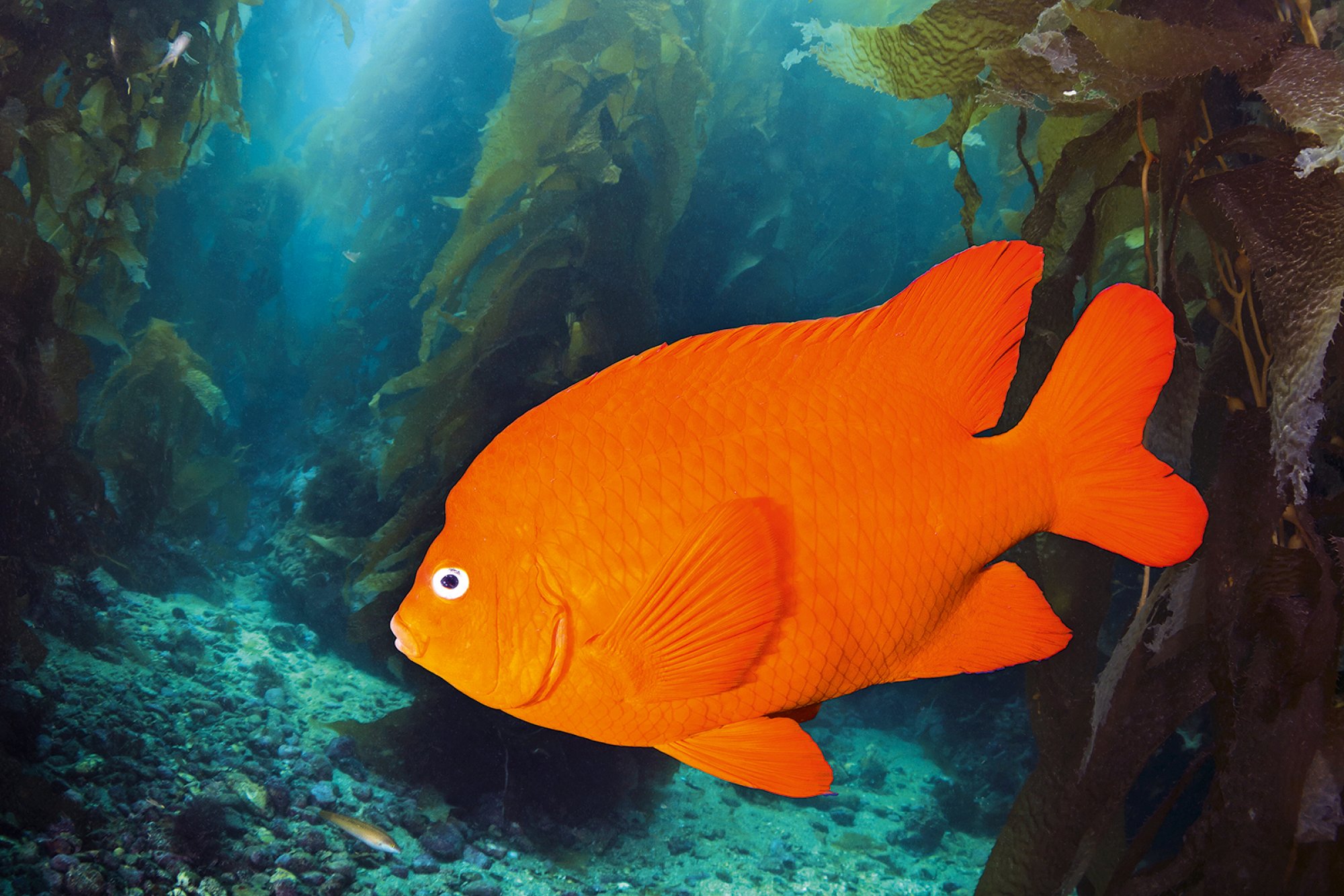Garibaldi Damselfish
The Ocean’s Goldfish
The beautiful garibaldi fish is hard to miss as it swims in, out, and around the kelp forests of the Pacific Ocean. Clearly distinguishable by its bright orange body, heart-shaped tail fin, and crystal-blue eyes, this relative of the damselfish is a favorite amongst those diving off the west coast of the United States and Mexico. The only fish that may be more vibrant in the water is a garibaldi in its juvenile state. Deep orange in color and covered in electric blue spots, diving with juvenile garibaldi is always a treat.
Like all damselfish, male garibaldi are famous for aggressively defending their territory, which usually consists of eggs that a female has laid, and they fertilized. The best places to encounter garibaldi are on the shallow rocky reefs and kelp beds of California and Mexico’s coast, ranging from Monterey Bay south to Guadalupe Island. To discover the best dive sites to go diving with garibaldi, explore the map below.
Dive Sites with this Animal View more on map

★★★★★ USAT Liberty Wreck
This is the only historical shipwreck in Bali, ranked #3 in the world for Wreck diving! The wreck is 25 meters form shore at a depth of 4 to 29 meters below the surface with most of it occuring in a shallow area. This dive site does not have strong currents, has clear water, and warm temperatures. Difficult entry!

★★★★★ Pyramid Point
Artificial coral reef placed on the sandy bottom with depths varying from 10 meters to 25 meters. The basis of the coral growth is made of rectangular concrete arranged like a small pyramid. It is one of the best places to witness a successful artificial reef.

★★★★☆ Colosseum
Colosseum is located on the west side of the island of Thulusdhoo. At the corner to the channel there is a large indentation in the form of a Roman amphitheatre at approx. 20m. This form is the epitome of the dive site and, at the same time, a meeting place for many marine creatures.

★★★★☆ Tugboat
Tugboat is Curacao’s most famous dive and snorkel spot due to its shallow depth. It was wrecked just off the shore of Caracasbaai and sits in only 15 feet of water. The tugboat is crawling with marine life and is now covered in sponges and coral growth.

★★★★★ Batu Bolong Komodo
Batu Bolong is a world class dive sites. Suitable for advanced and/or experienced divers due to its strong currents, Batu Bolong offers some huge schools of fish, many pelagic fish, and different kinds of sharks in the deeper parts of the dive.

★★★★★ Koh Bida Nok
This is one our favourite dive sites since it has the widest range of wildlife. The reef gently slopes down from the island apart from the wall at the south west which drops 22-26 meters.
